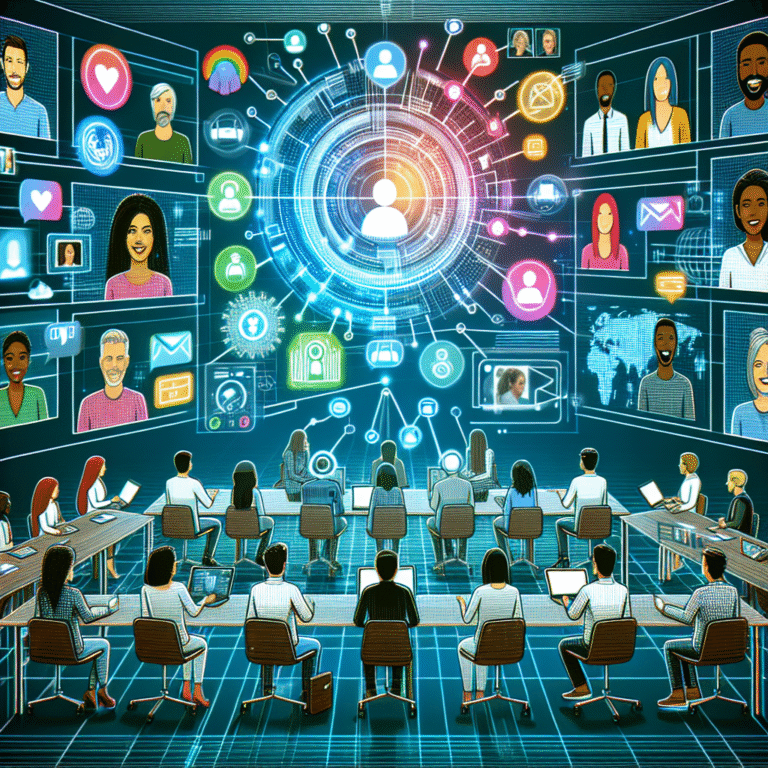
Introduction
In a world where the voices of the marginalized are becoming increasingly amplified, the journey from victim to advocate has never been more pertinent. Sexual harassment remains a pervasive issue that transcends boundaries—social, economic, and cultural. However, amidst the darkness of these harrowing experiences, stories of resilience shine through, illuminating the paths taken by many who have transformed their pain into power.
This exploration delves into the real-world experiences of individuals who have bravely moved from victimhood to advocacy, providing profound insights into their journeys. By celebrating their resilience, we can inspire others to reclaim their narratives and become catalysts for change. As we embark on this journey of exploration, let’s remember: every story matters, and the power to advocate for oneself and others is a beacon of hope.
Understanding Sexual Harassment
Definition and Scope
Sexual harassment encompasses a range of behaviors—from unwelcome comments and gestures to coercive actions that create a hostile environment. According to the U.S. Equal Employment Opportunity Commission (EEOC):
- Quid Pro Quo: This occurs when job benefits are conditioned on sexual favors.
- Hostile Work Environment: This arises when unwelcome sexual behavior interferes with an individual’s work or creates an intimidating environment.
Statistics on Sexual Harassment
| Statistic | Percentage |
|---|---|
| Women reporting harassment at work | 54% |
| Men reporting harassment at work | 15% |
| Percentage of survivors who do not report | 70% |
These figures provide a sobering reminder that while progress is being made, there is still a long way to go to create safe environments for all individuals.
Victimhood: The Beginning of the Journey
The Psychological Toll
Victims of sexual harassment often face profound emotional and psychological impacts. Anxiety, depression, and feelings of isolation are common reactions. Understanding these effects is crucial for moving from victim to advocate. Here are a few psychological responses that are frequently observed:
- Withdrawal: Many victims may isolate themselves from friends or family.
- Self-Doubt: Victims often blame themselves and question their worth.
- Resentment: There may be feelings of anger towards the perpetrator, but also towards institutions that failed to protect them.
Recognizing the Need for Change
As victims begin to process their experiences, a transformative realization often occurs: the need for change, both personally and within society. This critical moment can act as a catalyst for advocacy.
From Victim to Advocate: The Turning Point
Case Study 1: The Story of Sarah
Background: Sarah, a marketing executive, faced relentless harassment from a superior. Initially paralyzed by fear and a sense of helplessness, she decided to report the behavior after confiding in a friend.
Turning Point: After facing retaliation, Sarah realized the system was flawed and began to research her rights. This empowered her to fight back, ultimately leading to a formal complaint against her employer.
Analysis: Sarah’s story highlights the importance of seeking support and understanding one’s rights, illustrating the critical juncture where victimhood can evolve into advocacy. Her journey emphasizes that empowerment begins with education.
Building a Support Network
Amplifying Voices Together
Creating a network of advocates is vital for victims transitioning to advocacy. Support groups, online forums, and allyship can provide much-needed strength and guidance.
Case Study 2: James’s Advocacy
Background: James, a male survivor of sexual harassment, struggled to find his voice due to societal stigma. Realizing he could either remain silent or speak out, he chose the latter.
Turning Point: By sharing his experience publicly, he discovered a community of supporters who resonated with his story, leading him to start a podcast aimed at breaking the silence surrounding male victimization.
Analysis: James’s case underscores the necessity of addressing stereotypes about gender and vulnerability. By speaking out, he not only reclaimed his narrative but also encouraged others to do the same.
The Tools of Advocacy
Education and Awareness
One of the most effective means of advocacy is education. By raising awareness about sexual harassment, individuals can empower others who may not recognize or understand the issues they face.
- Workshops: Hosting workshops on recognizing and preventing sexual harassment can create informed communities.
- Public Speaking: Sharing personal stories at events can validate others’ experiences.
Case Study 3: Maria’s Mission
Background: Maria experienced harassment during her internship and felt powerless at the time. Years later, she became an advocate, focusing on educational programs in her local community.
Turning Point: Maria initiated a school project tailored for teenagers, educating them on respect, consent, and the implications of harassment.
Analysis: Maria’s journey illustrates that prevention through education can change the culture surrounding harassment. By targeting youth, advocates can foster healthier relationships and safer environments from an early age.
Legal Advocacy: Navigating the System
Understanding legal rights can be a powerful tool for advocates. While laws and policies vary, many countries have provisions to protect victims and provide avenues for recourse.
- Know Your Rights: Familiarizing oneself with workplace policies and legal frameworks is crucial.
- Engagement with Lawmakers: Advocates can work to push for reforms that enhance protections against harassment.
Building Resilience Through Storytelling
The Power of Personal Narratives
Sharing experiences is not merely about recounting a past trauma but also about reclaiming agency. Storytelling can inspire, educate, and perform the critical function of healing.
Platforms for Storytelling:
- Social Media: Many advocates leverage platforms to reach broad audiences. Hashtags like #MeToo have transformed personal stories into global movements.
- Public Forums: Community events enable survivors to share on a public stage, often leading to collective healing.
Case Study 4: Alex’s Activism
Background: After experiencing harassment at a university, Alex took to social media to share her story. What started as a form of personal catharsis quickly turned into a movement.
Turning Point: Alex’s story gained traction, leading to discussions with university officials about improving campus safety. She later became an essential part of a committee designed to implement new policy changes.
Analysis: Alex’s experience shows how individuals can spark broader societal discussions. Utilizing modern platforms allows stories to resonate with audiences that can effect change.
Creating Lasting Change
Making Policies Work
Advocates can play a critical role in shaping policies that promote safer environments. Engaging with stakeholders, including businesses, educational institutions, and governments, can lead to meaningful reforms.
Advocacy Actions:
- Drafting Proposals: Working with legislators to develop comprehensive anti-harassment policies.
- Monitoring Implementation: Ensuring that workplaces enforce and comply with established policies.
Case Study 5: The Role of Organizations
Background: Several nonprofit organizations have emerged to combat sexual harassment, providing resources for advocacy and support.
Turning Point: Organizations like "End Sexual Violence Now" and "Know Your Rights" focus on providing legal support and public education.
Analysis: These organizations highlight the power of collective advocacy and reinforce that individual stories can lead to large-scale changes in public policy.
Conclusion: Inspiration to Empower Others
The journey from victim to advocate is not linear; it is often turbulent and nonlinear, marked by both setbacks and triumphs. Yet, every story of resilience adds to the collective force that can challenge the status quo and bring about lasting change. It’s a call to action for us all: to transform personal pain into advocacy, to raise our voices for those who cannot, and to work together to create safer, more inclusive environments.
As you reflect on these stories of resilience, consider how you can contribute to this cause. Whether through education, advocacy, or simply listening to the narratives of others, there is a place for everyone in this fight against sexual harassment.
FAQs
1. What is sexual harassment?
Sexual harassment can be defined as unwelcome sexual advances or behavior that creates an intimidating or hostile environment.
2. How can I support someone experiencing harassment?
Listening without judgment, offering emotional support, and helping them understand their rights are vital ways to support a survivor.
3. What should I do if I experience harassment at work?
Document the incidents, report them to HR or a trusted authority, and seek support from colleagues or advocacy groups.
4. Can men be victims of sexual harassment?
Yes, men can also be victims of sexual harassment, but societal stigma often prevents them from speaking out.
5. How can I get involved in advocacy?
You can engage in local organizations, participate in educational programs, or use social media to raise awareness about sexual harassment issues.
By sharing these stories and insights, we can shift the narrative surrounding sexual harassment and empower both individuals and communities to stand against it. The journey from victim to advocate is a journey of courage; let us walk it together.















